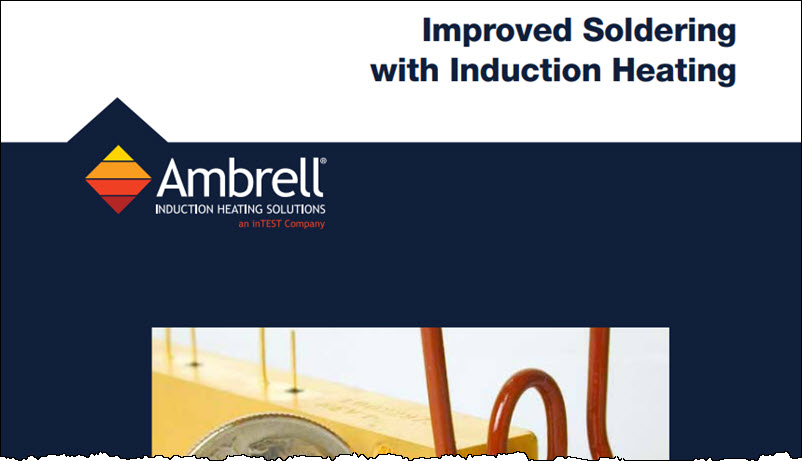Induction Brazing an Aluminum Assembly
Objective A company wanted to assess using induction heating for their aluminum assembly brazing process, and contacted THE LAB at Ambrell to utilize...
Applications
Applications: More
Applications: More

Industries:
Industries: More
Industries: More
Industries: More

Products:
Products: More
Services:
Services: More

Learn:
Learn: More
About:


A new brochure that highlights induction soldering applications is now available. This brochure, which is titled "Improved Soldering with Induction Heating," reviews ten soldering applications that were tested by THE LAB at Ambrell. It also discusses what soldering is and why induction is often a good choice for soldering applications.
Our new soldering brochure highlights the following applications:
Soldering Four Fusible Copper Strips
Soldering a Pair of Magnetic Steel Pins
Soldering a Fine Copper Wire to a Connector Assembly
Soldering Steel Canister Reservoir for Sealing
Soldering a Copper Wire and Contact Assembly
Soldering a Copper Tube to a Brass Flow Valve
Soldering Brass and Steel Radiator Caps
Soldering a Copper Lug and a Wire
Soldering Copper Tabs
Soldering a Rivet onto a Steel Tank Cap with Induction Heating
Here's an excerpt about soldering from the brochure:
Induction soldering is an induction process in which two separate pieces are fused together using a filler metal or other material that melts at a temperature below 427 ºC (800 ºF). The filler metal varies depending on the other components being joined, but the most common fillers for induction soldering include alloys such as tin-silver, tin-zinc, and tin-lead.
Soldering differs from brazing because it is performed at lower temperatures. When compared to brazing, soldering may have a slightly weaker joint, but that can be preferable for some applications such as those involving small components. Soldering differs from welding because it does not involve the melting of joints.
Click the button below to download our new induction soldering brochure today:

Objective A company wanted to assess using induction heating for their aluminum assembly brazing process, and contacted THE LAB at Ambrell to utilize...

Induction heating is a process that uses electromagnetic fields to heat electrically conductive materials. It has been used in numerous industries...

Induction heating, a process that uses electromagnetic induction to heat electrically conductive materials, is often thought of for large industrial...